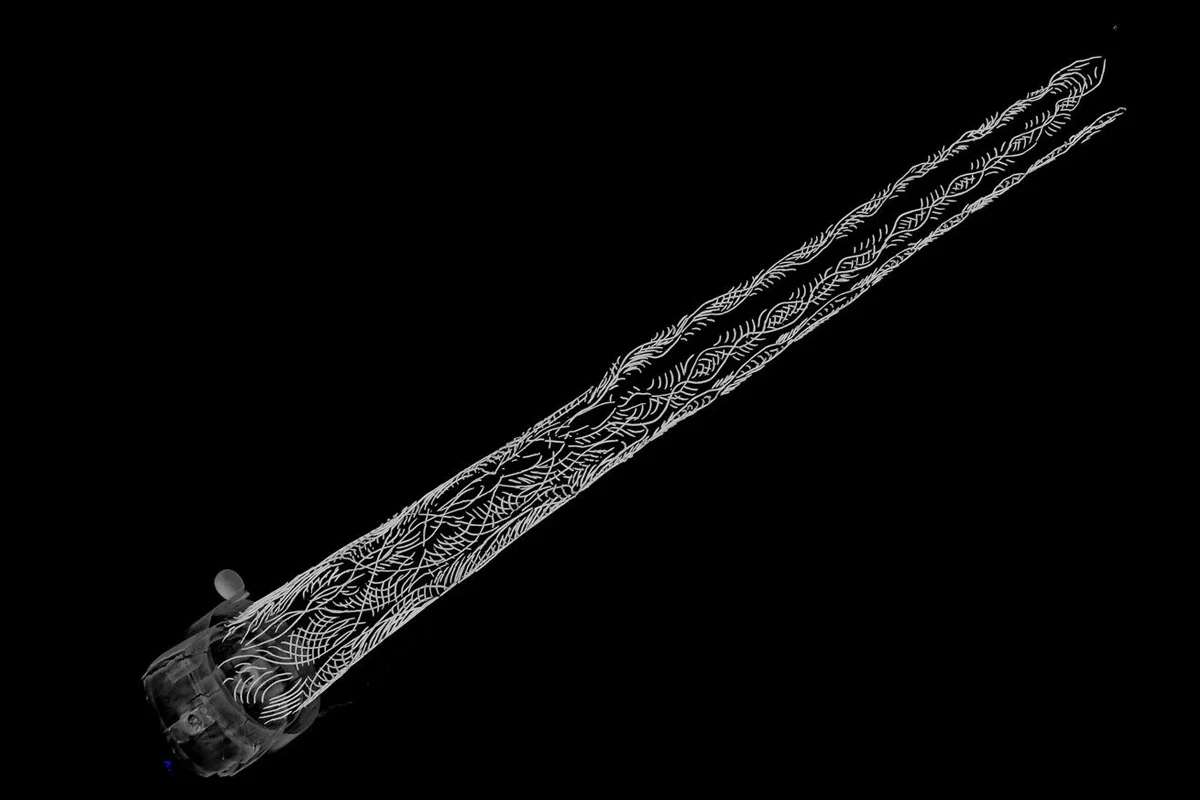In 1954, a bronze spear sheath dating from Japan’s Kofun period (AD 300–538) was found beneath a rock on Okinoshima, a sacred island located off the coast of Munakata, Fukuoka.
The entire island is revered as a Shinto kami (deity), with strict restrictions prohibiting women from setting foot on the island’s shores. Even select men are only permitted to visit the island after undergoing ritual purification rites.
Archaeological evidence indicates that rituals have been performed on the island since the 4th century AD, where many iwakura (sacred rocks) are still positioned in their original state to protect maritime voyages. The island has yielded more than 80,000 artefacts to date, all designated as national treasures of Japan.
The bronze sheath was found under one of these sacred rocks which was deposited between the 5th and 7th centuries AD.

In a recent study by Japan’s Cultural Affairs Agency, over 4,200 metal objects from Okinoshima have been documented using modern scientific methods. An X-ray of the spear sheath revealed inlaid gold patterns within the corroded iron spear still encased inside.
The inlay features a complex design, possibly a combination of stylised phoenix motifs, tortoise-shell geometry, and arabesque patterns. No other known spear sheath in Japan or elsewhere features similar decoration and represents the earliest gold-inlaid spear sheath in East Asia.
Experts believe the spear was not intended for combat. Its elaborate design and delicate construction suggest it was a votive object crafted in the Japanese archipelago with influences from the Korean Peninsula.
“This discovery gives us a glimpse into how much importance the Yamato government placed on the rituals on Okinoshima, and is a piece that will shed light on the rituals on Okinoshima,” said the study authors.
Header Image Credit : Okinoshima Heritage
Sources : Okinoshima Heritage

